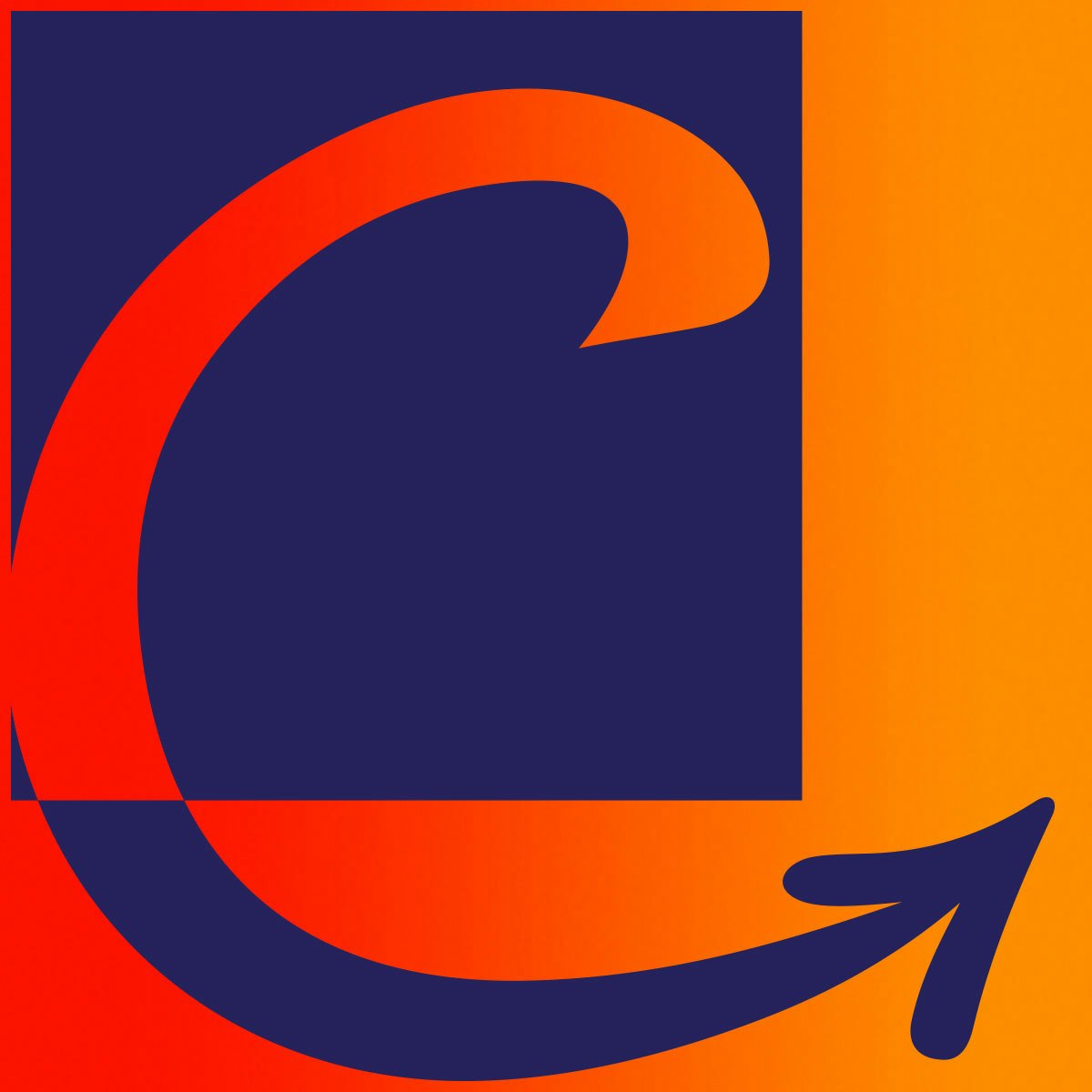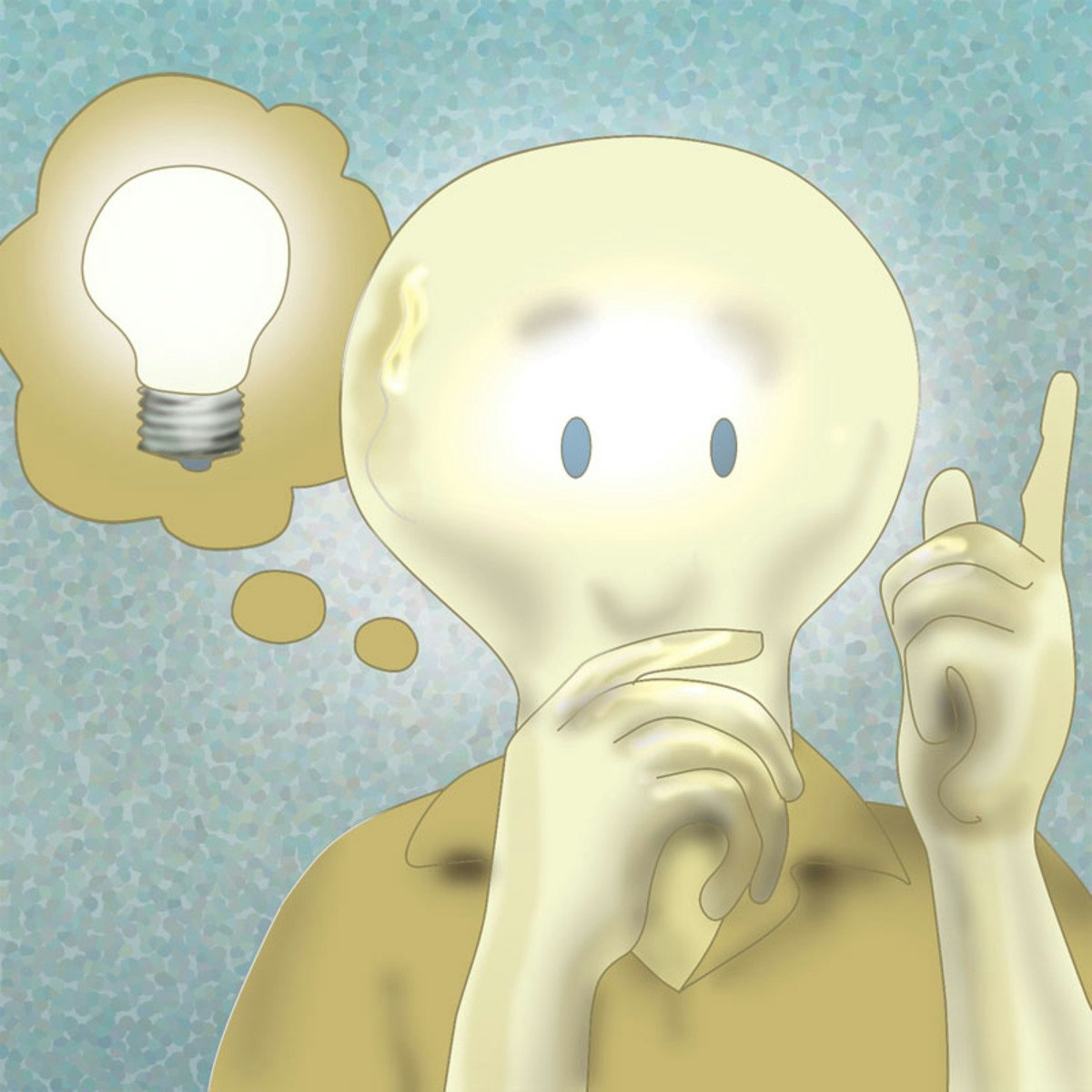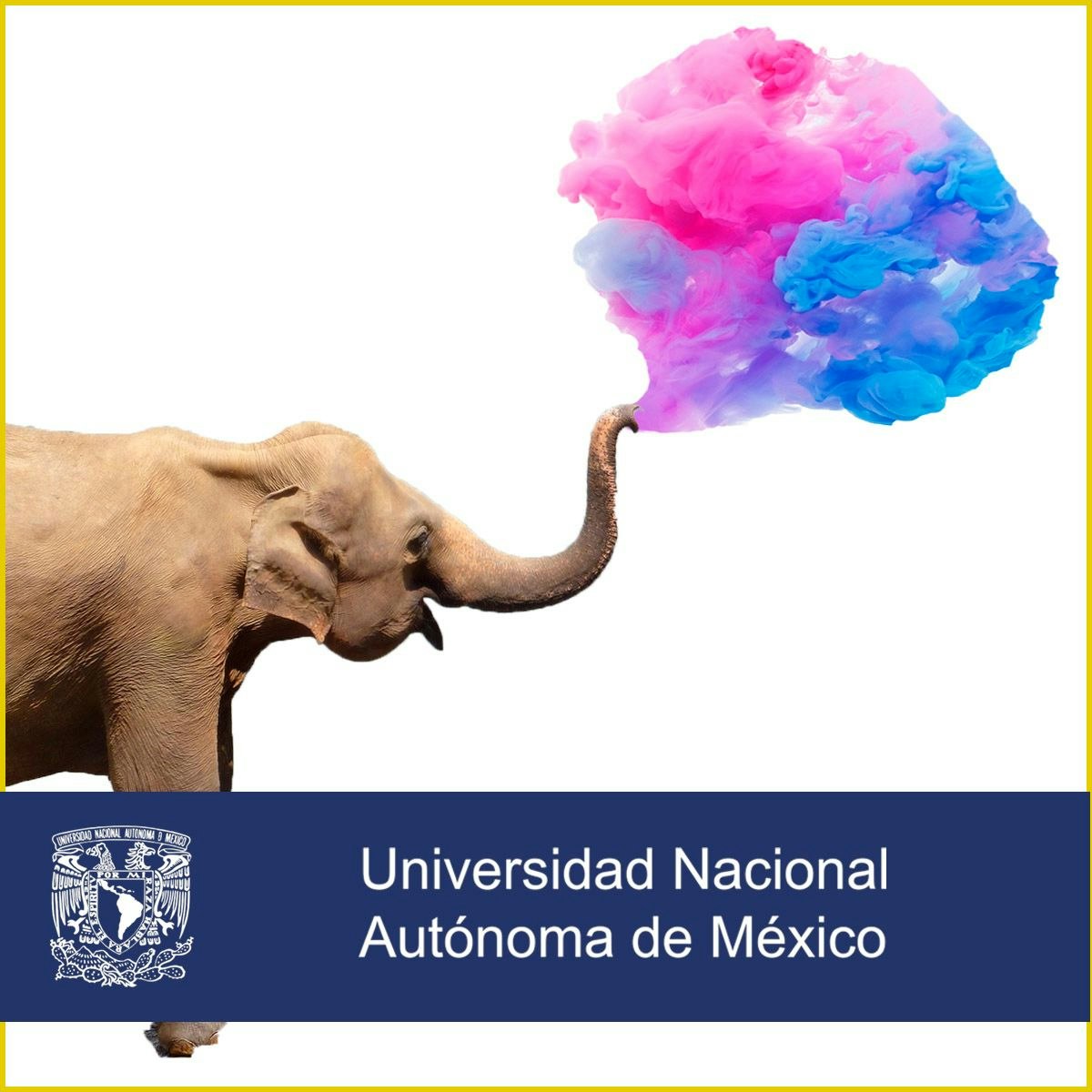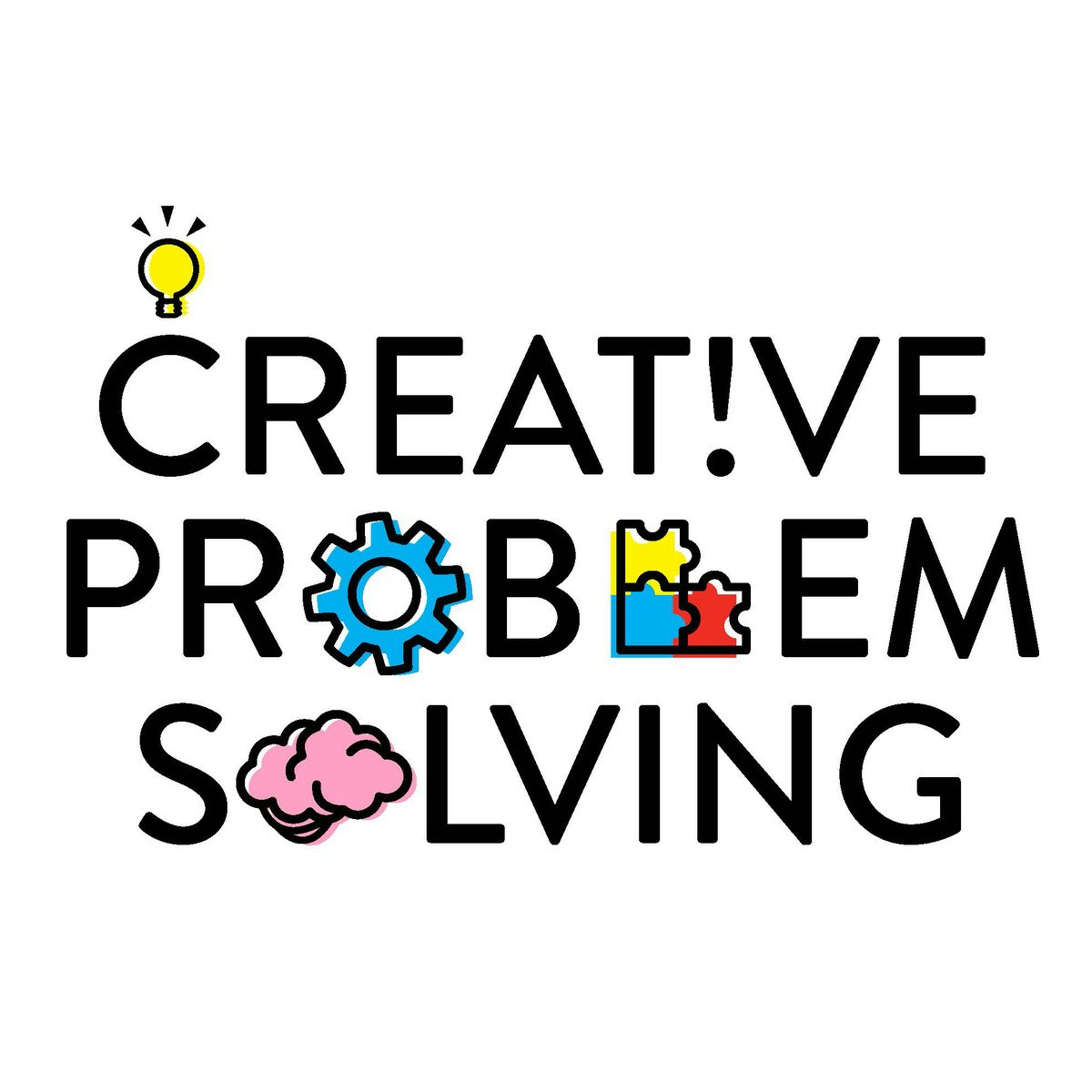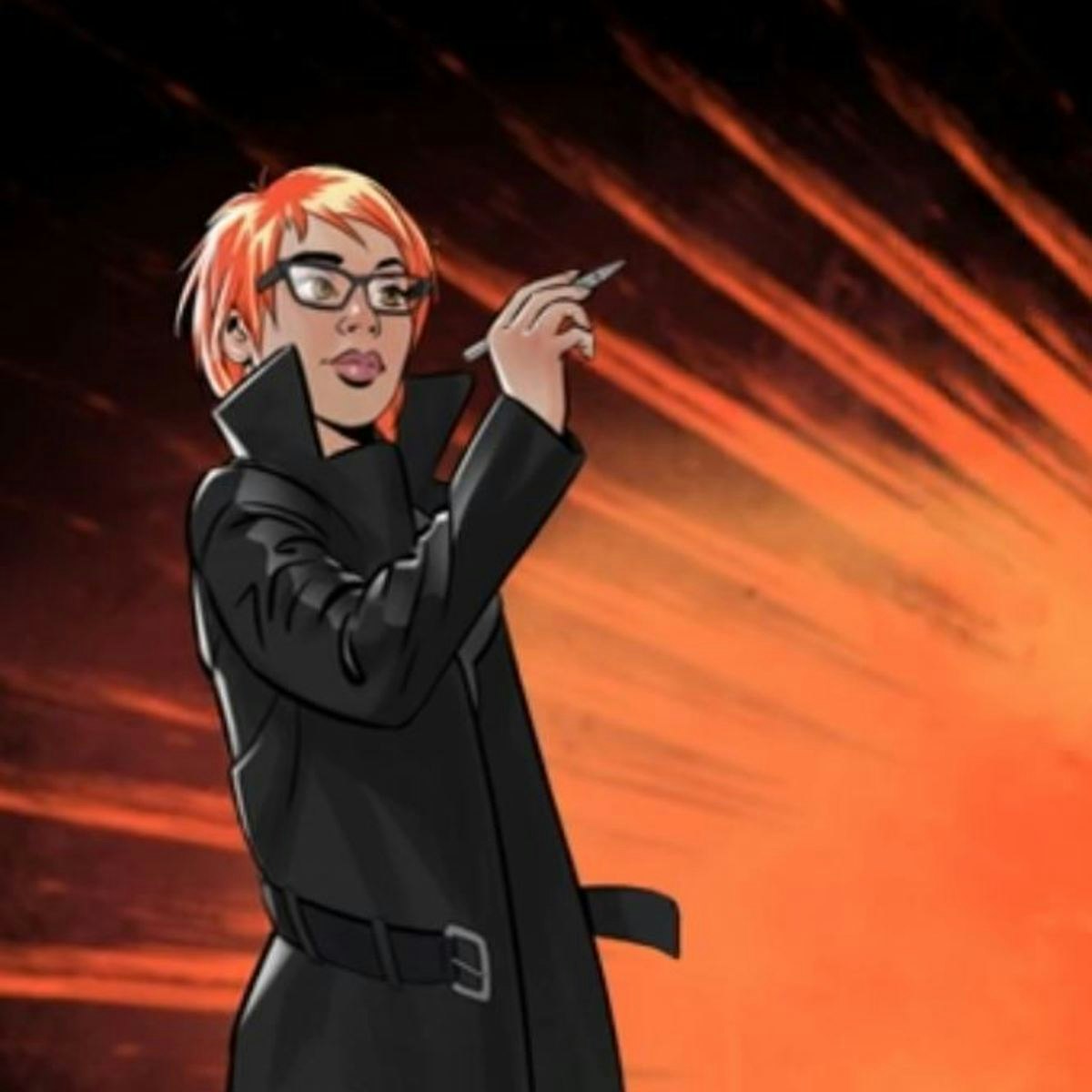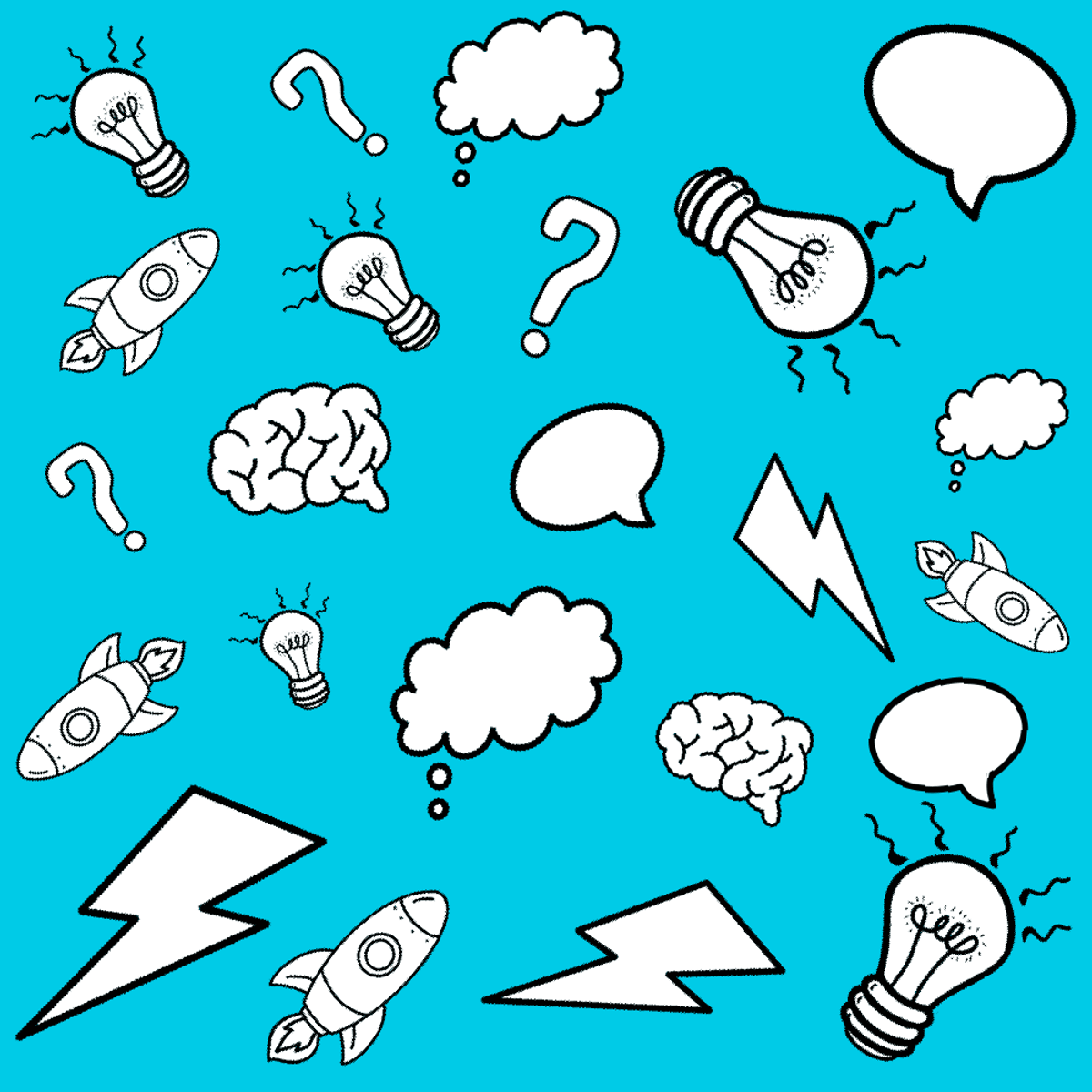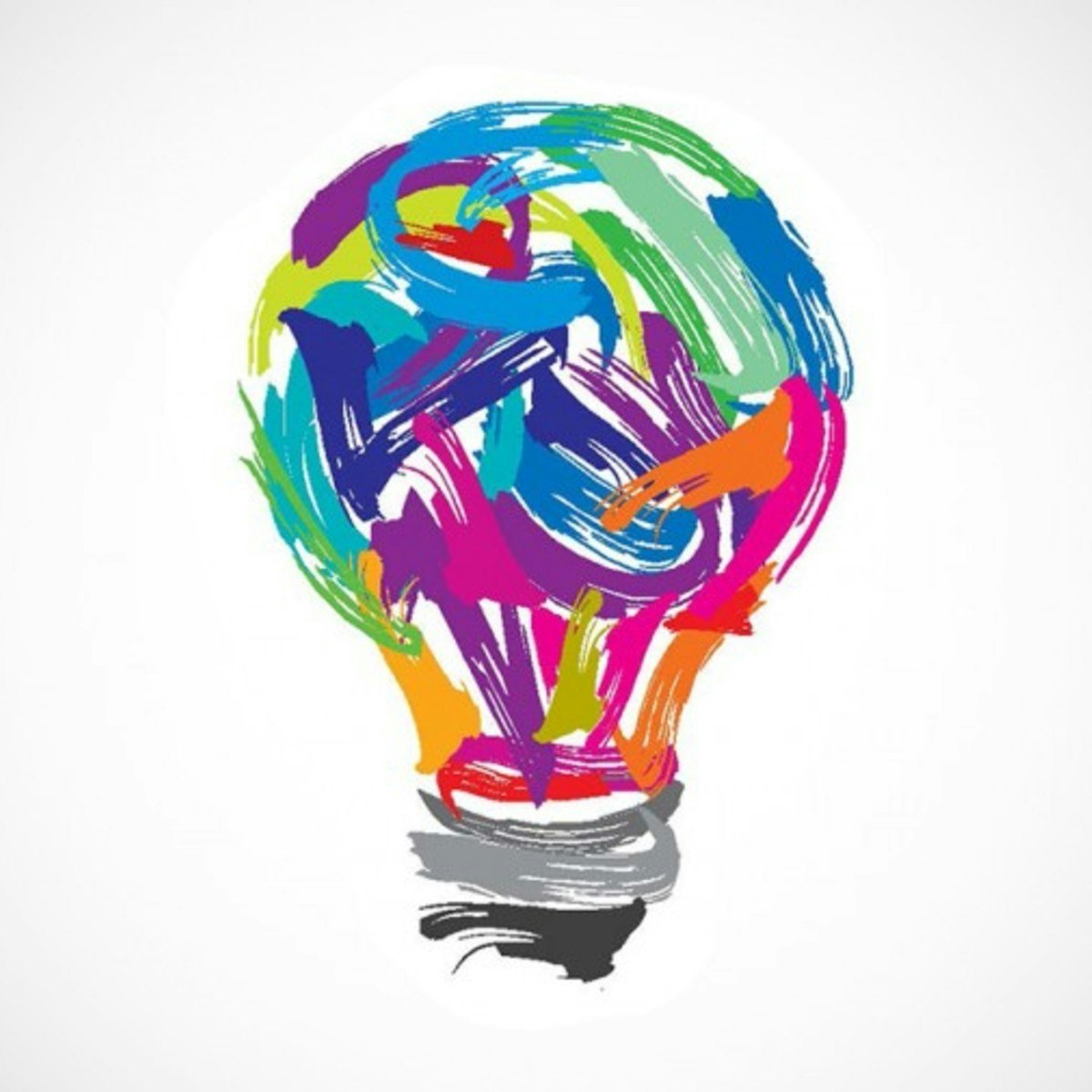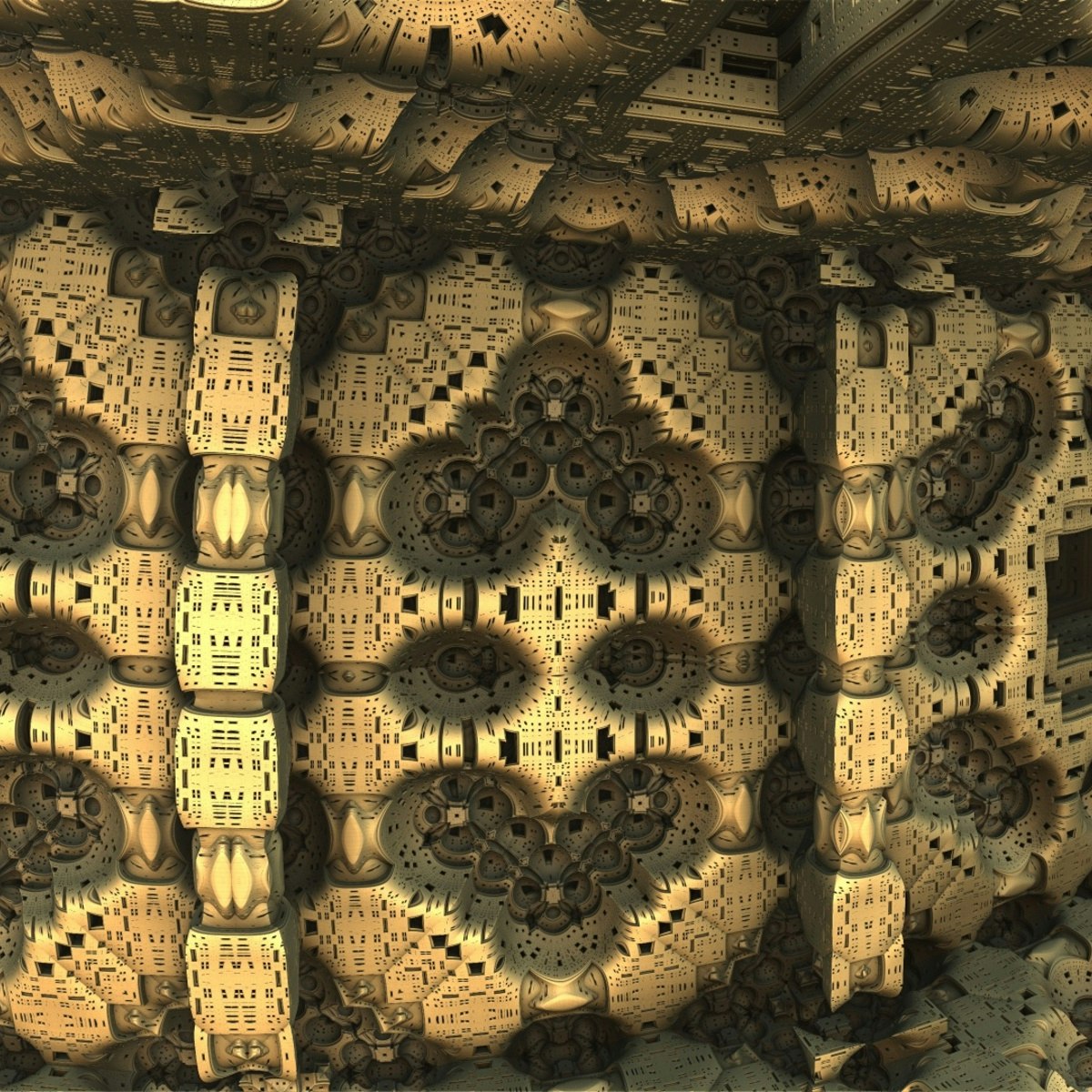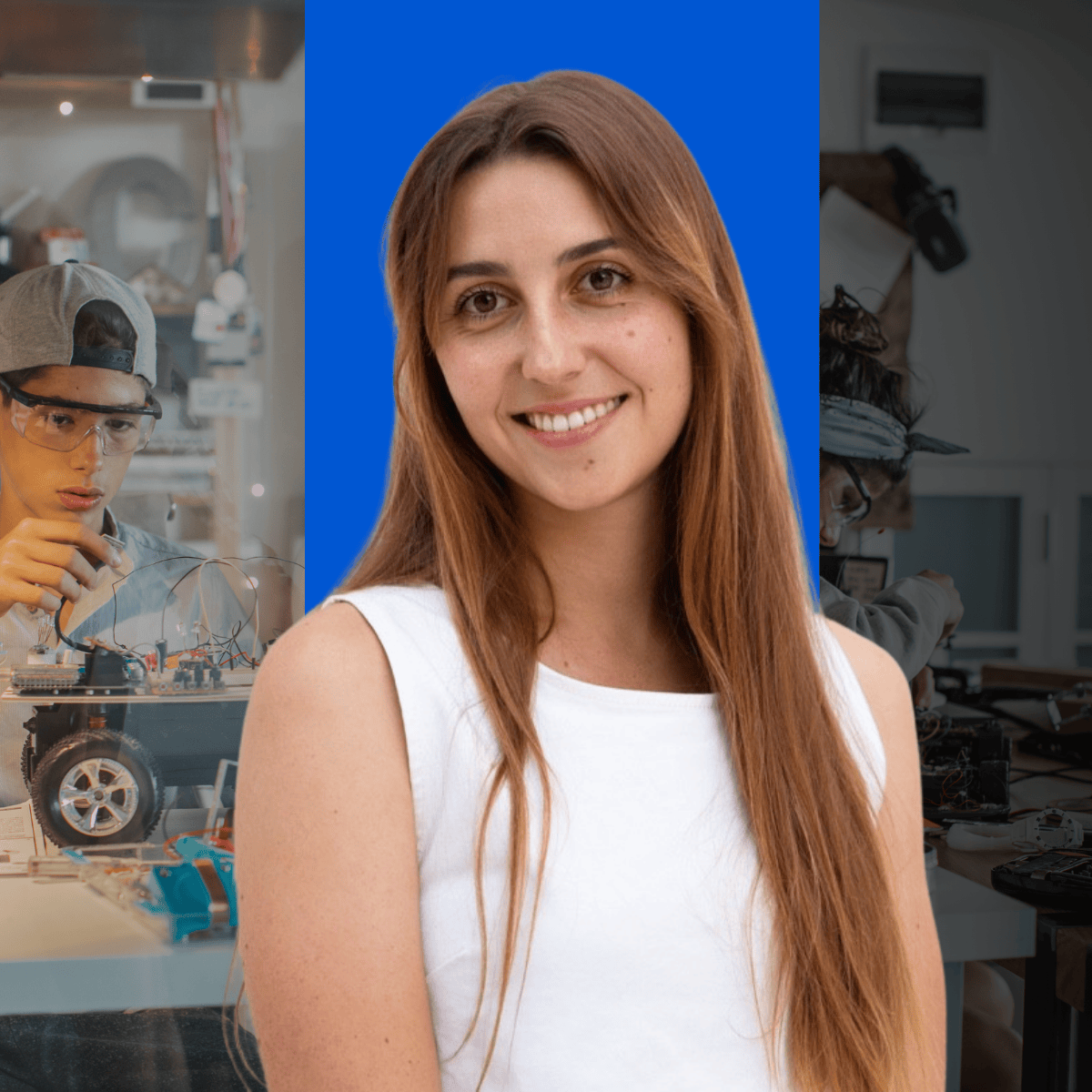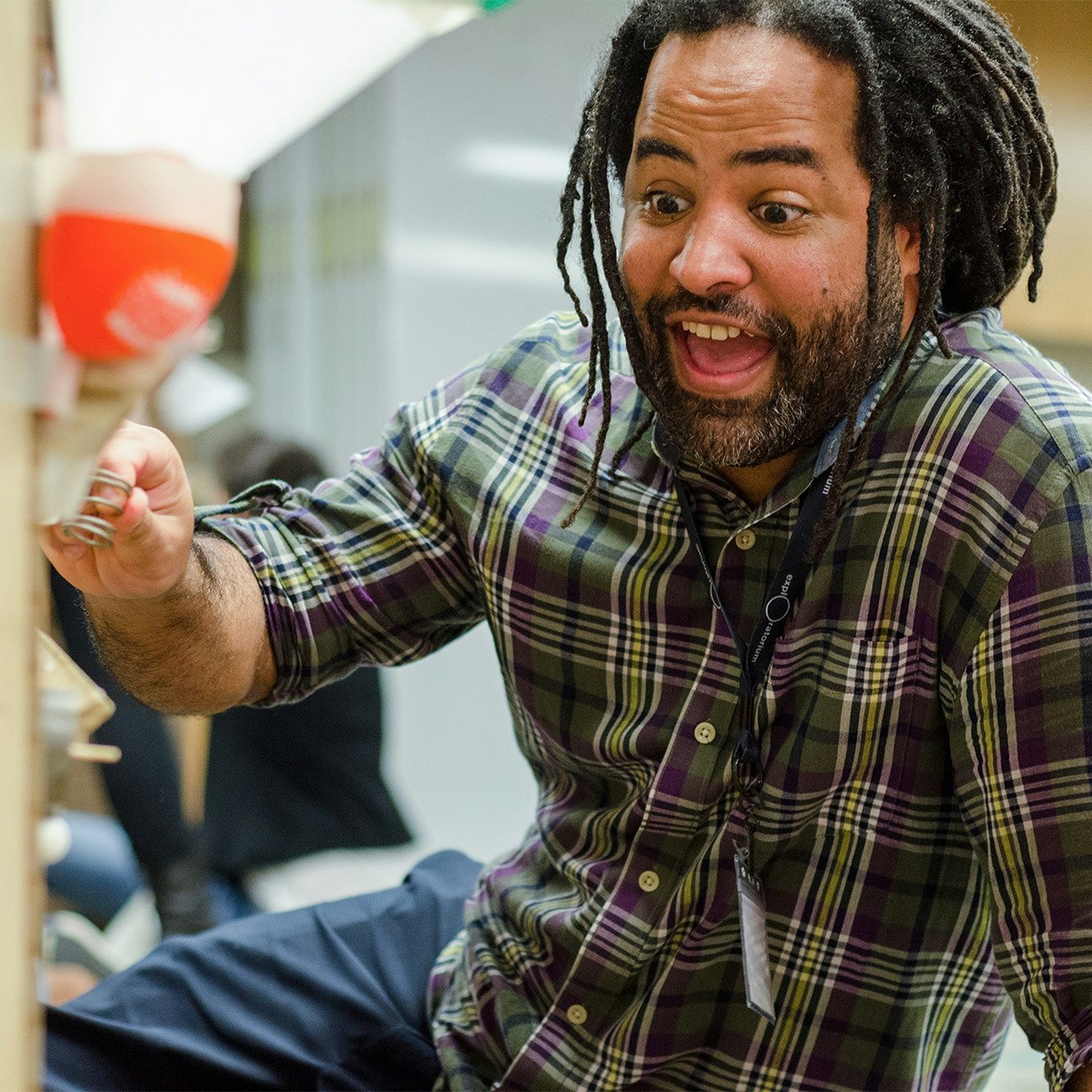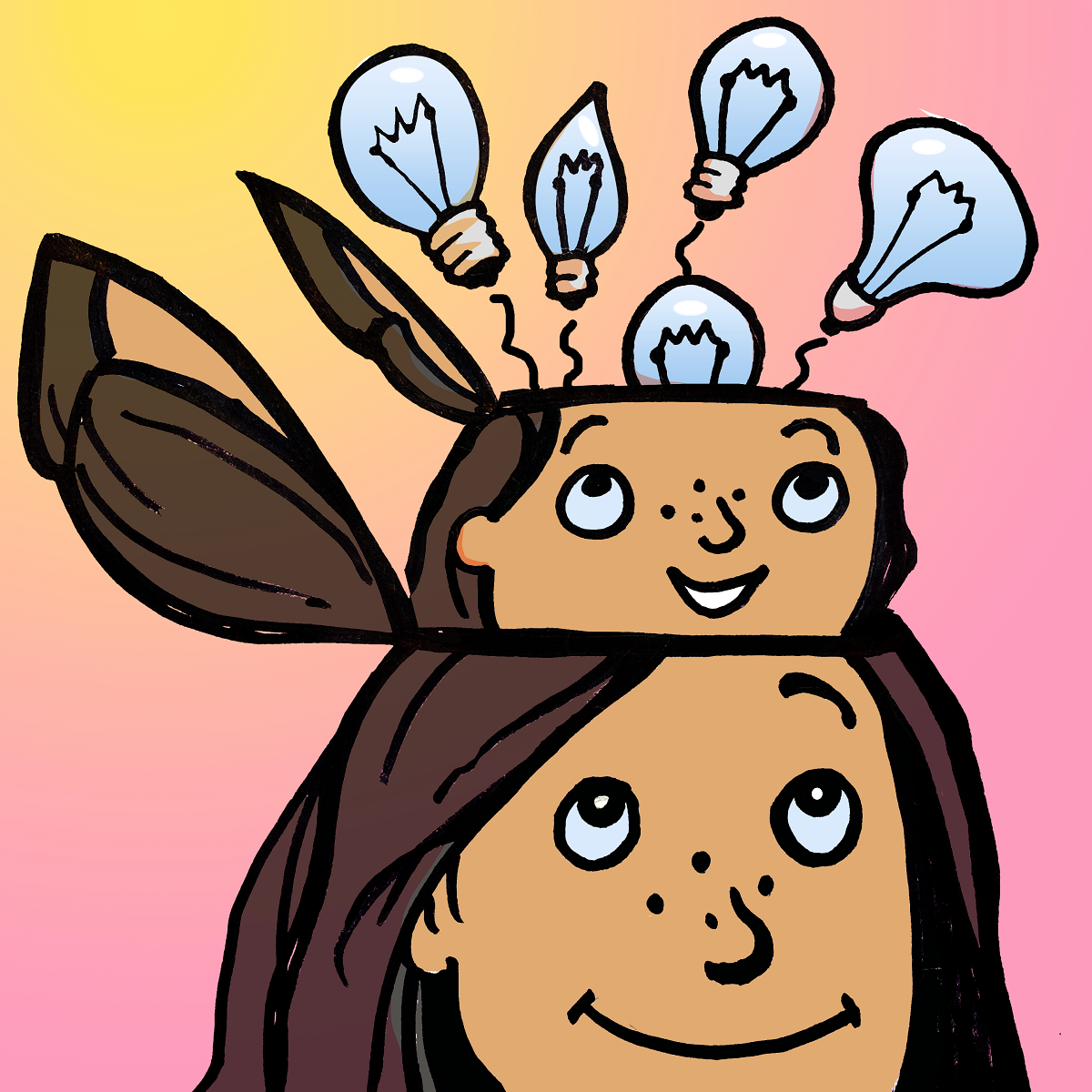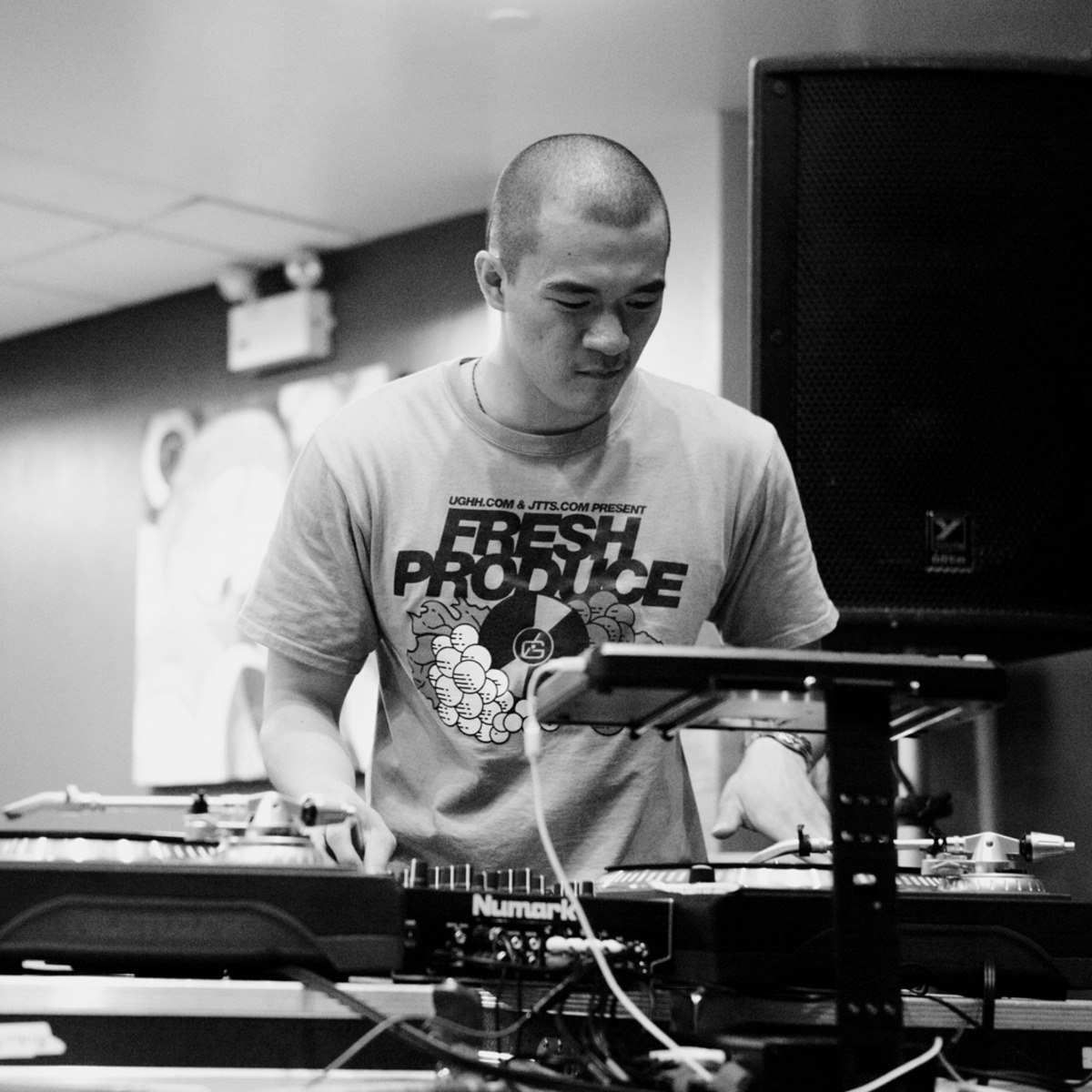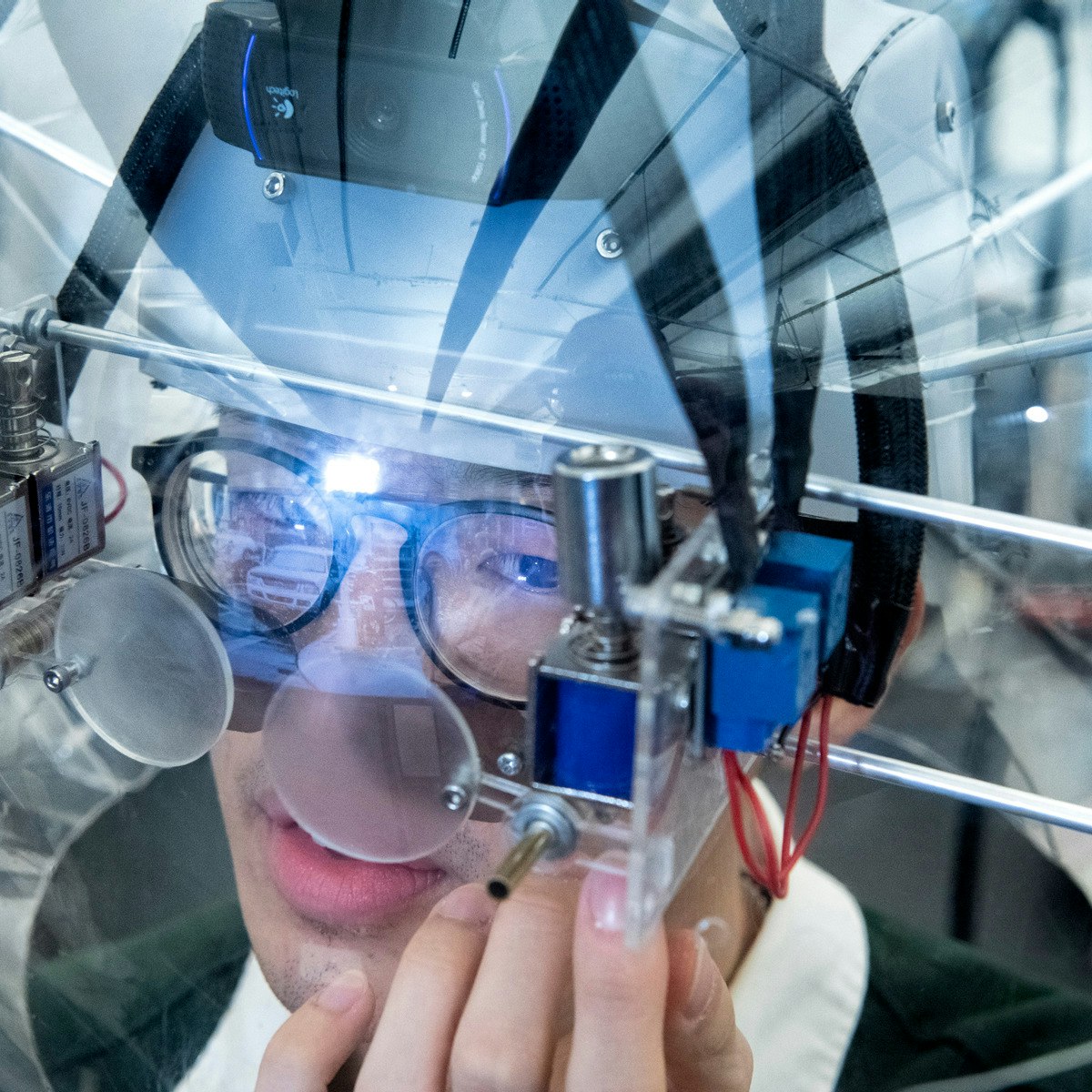Creativity
derstanding Creativity: Process, Practice, and Potential
Creativity is often described as the ability to generate novel and valuable ideas or solutions. It involves synthesizing information in new ways, seeing connections others might miss, and producing outcomes that are both original and useful within a given context. Far from being an elusive gift bestowed upon a select few, creativity is increasingly understood as a cognitive capacity inherent, to varying degrees, in everyone—a skill that can be understood, practiced, and developed over time through conscious effort and the application of specific techniques.
Engaging with creativity can be deeply rewarding. It's the engine behind innovation in science, technology, and business, driving progress and solving complex global challenges. In the arts and humanities, creativity fuels expression, cultural evolution, and deeper understanding of the human condition. For individuals, cultivating creativity can lead to more fulfilling work, richer personal lives, and enhanced problem-solving abilities in everyday situations. Whether aiming for a career in a traditionally creative field or seeking to bring fresh perspectives to any role, understanding and harnessing creativity offers significant potential.
Introduction to Creativity
Defining the Spark: What is Creativity?
At its core, creativity involves the production of something both new (original, novel, unexpected) and useful (adaptive, valuable, relevant to a task or problem). This definition applies across domains, from painting a masterpiece or composing music to designing a more efficient process or finding an innovative solution to a business problem. It's not just about artistic expression; it's a fundamental aspect of human cognition that allows us to adapt, invent, and progress.
Key components often associated with creativity include divergent thinking (generating many different ideas), convergent thinking (evaluating and refining ideas to find the best solution), domain-specific knowledge (expertise in a particular area), intrinsic motivation (passion for the task itself), and a supportive environment. Personality traits like openness to experience, tolerance for ambiguity, risk-taking, and perseverance also play significant roles. Understanding these components helps demystify creativity, framing it as a multifaceted process rather than a singular trait.
Ultimately, creativity isn't about waiting for a mythical muse; it's about actively engaging with problems, exploring possibilities, combining existing elements in new ways, and having the persistence to bring novel ideas to fruition. It is a dynamic interplay between knowledge, thinking processes, personality, and environment.
These courses offer foundational perspectives on what creativity is and how to begin cultivating it.
A Brief History of the Idea
The concept of "creativity" as we understand it today is relatively modern. Ancient cultures often attributed novel ideas or artistic inspiration to divine sources – the Muses in Greek mythology, for example. The focus was less on the individual creator and more on the divine inspiration flowing through them. During the Renaissance, the notion of individual genius began to emerge, celebrating the unique talents of artists and inventors like Leonardo da Vinci.
The Enlightenment further shifted focus towards human reason and ingenuity. However, it wasn't until the mid-20th century, particularly with the work of psychologists like J.P. Guilford, that creativity became a distinct subject of scientific study. Guilford's 1950 address to the American Psychological Association is often cited as a pivotal moment, calling for systematic research into creative processes and traits. This spurred decades of research exploring the cognitive, personality, and environmental factors contributing to creative thought and achievement.
Today, creativity is studied across disciplines, including psychology, neuroscience, business, and education. The focus has broadened from solely examining exceptional "Big C" creativity (like Nobel Prize winners) to understanding everyday "little c" creativity (like finding a clever solution to a daily problem) and the processes that enable it in various contexts.
Creativity's Role in Progress
Creativity is fundamental to human advancement. Throughout history, novel ideas and inventions—from the wheel to the printing press to the internet—have reshaped societies, economies, and daily life. It's the driving force behind scientific discovery, technological innovation, artistic expression, and entrepreneurial ventures. Without the capacity to imagine alternatives and generate new solutions, progress would stagnate.
In contemporary society, creativity is more critical than ever. Businesses rely on innovation to stay competitive, requiring employees who can think differently and devise novel products, services, or processes. Scientists and researchers need creative approaches to tackle complex global challenges like climate change, disease, and resource scarcity. Even in seemingly non-creative roles, the ability to approach problems flexibly and generate unique solutions is highly valued.
Furthermore, creativity contributes significantly to personal and societal well-being. Engaging in creative activities can reduce stress, enhance mood, and foster a sense of accomplishment. Culturally, creative expression enriches lives, preserves traditions, challenges norms, and builds understanding across diverse communities. It is an essential ingredient for a dynamic, adaptive, and thriving society.
Debunking Common Creativity Myths
One of the most persistent myths is that creativity is an innate talent – you're either born with it or you're not. Research consistently shows this is untrue. While some individuals may have predispositions or early experiences that foster creativity, it is fundamentally a skill and a process that can be learned, practiced, and developed by anyone willing to put in the effort. Like any skill, proficiency increases with understanding and application.
Another common myth is that creativity only belongs in the arts. While artistic fields are obvious domains for creative expression, creativity is vital across all disciplines, including science, engineering, business, education, and even everyday problem-solving. Logical thinking and creativity are not mutually exclusive; often, the most innovative solutions arise from combining analytical rigor with imaginative exploration.
People also sometimes believe creativity strikes like lightning, a sudden flash of inspiration out of nowhere. While moments of insight (the "aha!" moment) do occur, they are typically preceded by periods of intense preparation, immersion in the problem, and incubation – allowing the subconscious mind to work. Creativity is more often the result of sustained effort, experimentation, and refinement than a passive waiting game.
These books delve into the nature of creativity and challenge preconceived notions about its origins and practice.
Theoretical Foundations
Mapping the Mind: Guilford's Structure of Intellect
J.P. Guilford's Structure of Intellect (SOI) model, proposed in the mid-20th century, was a landmark attempt to move beyond a single IQ score and map the diverse abilities of human intelligence. He conceptualized intelligence along three dimensions: Operations (what the mind does), Contents (the type of information processed), and Products (the form the information takes). This resulted in a cube model representing potentially 120 (later expanded) distinct intellectual abilities.
Within this framework, Guilford made a crucial distinction between convergent and divergent thinking. Convergent thinking involves finding a single, correct answer to a problem, often relying on logic and existing knowledge (e.g., solving a standard math problem). Divergent thinking, which Guilford strongly linked to creativity, involves generating multiple, varied solutions or ideas from a single starting point (e.g., brainstorming uses for a paperclip). He developed tests to measure aspects of divergent thinking, such as fluency (number of ideas), flexibility (different categories of ideas), originality (uniqueness of ideas), and elaboration (detail of ideas).
While the full SOI model is complex and not without its critics, Guilford's emphasis on divergent thinking profoundly influenced creativity research. It provided a conceptual framework and measurement tools that allowed psychologists to study creativity empirically, shifting the focus from mystical inspiration to identifiable cognitive processes. His work laid the groundwork for understanding creativity as a measurable and potentially trainable set of abilities.
The Creative Ecosystem: Csikszentmihalyi's Systems Model
Mihaly Csikszentmihalyi, known for his work on "flow," proposed a systems model that views creativity not just as an individual trait or cognitive process, but as an interaction between three elements: the individual, the domain, and the field. The individual possesses certain cognitive abilities, personality traits, and motivation. The domain represents the specific area of knowledge, culture, or symbolic system (e.g., physics, painting, music composition) with its own rules, procedures, and history.
The crucial third element is the field, which consists of the social gatekeepers – the experts, critics, journal editors, gallery owners, funding agencies – who evaluate the novelty produced by the individual within the domain. According to this model, an idea or product is only recognized as "creative" when the field accepts it as a valuable contribution that potentially modifies the domain itself. Thus, creativity is not solely an internal mental event but a sociocultural phenomenon judged by relevant experts.
This systems perspective highlights that individual talent alone is insufficient. For creativity to be recognized and have impact, the individual must operate within a specific domain, understand its conventions, and produce work that resonates with the gatekeepers of the field. It emphasizes the social and cultural context of creativity and explains why some novel ideas flourish while others, perhaps equally original, fail to gain traction.
This book synthesizes various perspectives on intelligence and creativity, including theoretical models.
Inside the Creative Brain: Neuroscientific Insights
Neuroscience offers increasingly sophisticated tools, like fMRI and EEG, to explore the brain activity associated with creative thought. Early ideas often localized creativity to the right hemisphere, but current research suggests a more complex picture involving dynamic interactions between large-scale brain networks, rather than a single brain region.
Key networks implicated include the Default Mode Network (DMN), typically active during mind-wandering, imagination, and recalling memories; the Executive Control Network (ECN), involved in focused attention, planning, and evaluation; and the Salience Network (SN), which helps switch between internally focused thought (DMN) and externally focused attention (ECN). Effective creative thinking seems to involve flexible interplay between these networks. For instance, idea generation might rely more on the DMN, while evaluating and refining those ideas might engage the ECN.
Research also examines the role of neurotransmitters like dopamine, linked to motivation and exploration, and cognitive processes like semantic memory access (how we retrieve related concepts) and cognitive flexibility (the ability to switch between different ways of thinking). While a complete neural map of creativity remains elusive, neuroscience is providing valuable insights into the brain mechanisms underlying different facets of the creative process, reinforcing the idea that creativity involves complex, whole-brain activity.
This book offers insights into the neural underpinnings of creativity.
Generating vs. Refining: Divergent and Convergent Thinking
As introduced by Guilford, the distinction between divergent and convergent thinking remains a cornerstone of creativity theory. Divergent thinking is the process of exploring many possible solutions or ideas. It's characterized by fluency (generating many ideas), flexibility (generating ideas across different categories), originality (generating novel ideas), and elaboration (adding detail to ideas). Techniques like brainstorming are designed specifically to stimulate divergent thinking, encouraging free-flowing idea generation without immediate judgment.
Convergent thinking, on the other hand, involves narrowing down possibilities to find the single best, most logical, or most effective solution. It relies on analysis, evaluation, logic, and critical judgment. While divergent thinking generates the raw material, convergent thinking shapes, refines, and selects the most promising options. Standardized tests or problems with one correct answer typically measure convergent thinking.
Effective creativity requires a balance and flexible switching between both modes of thought. Over-reliance on divergent thinking can lead to many ideas but little practical outcome, while excessive convergent thinking can stifle novelty and prematurely shut down promising avenues. The creative process often involves cycles of divergent exploration followed by convergent evaluation and refinement.
These courses explore problem-solving techniques that leverage both divergent and convergent thinking.
Creative Process and Techniques
Navigating the Journey: Stages of the Creative Process
While the creative process isn't always linear, models describing its stages can provide a useful framework. A classic model, often attributed to Graham Wallas, outlines four key phases: Preparation, Incubation, Illumination, and Verification.
Preparation involves immersing oneself in the problem or domain. This includes gathering information, defining the challenge, analyzing existing solutions, and activating relevant knowledge. It's a phase of focused effort and conscious work. Incubation is a period where conscious attention is turned away from the problem. This allows the subconscious mind to process information, make non-obvious connections, and work through potential blocks. Activities during incubation might include rest, engaging in unrelated tasks, or simply letting the problem "simmer."
Illumination is the often-sudden "aha!" moment when a potential solution or key insight emerges into conscious awareness. This breakthrough often feels effortless but is typically the result of the preceding preparation and incubation stages. Finally, Verification involves consciously evaluating, testing, refining, and elaborating the insight or idea. This stage requires critical thinking, experimentation, and the practical work needed to implement the solution and determine its actual value and feasibility.
Expanding Horizons: Brainstorming and Lateral Thinking
Generating novel ideas often requires breaking free from conventional thinking patterns. Brainstorming, popularized by Alex Osborn, is a well-known technique for encouraging divergent thinking within groups (or individually). Key principles include deferring judgment, encouraging wild ideas, building on others' ideas, and aiming for quantity. The goal is to create a free-flowing environment where unusual connections can emerge without fear of immediate criticism.
Lateral thinking, a term coined by Edward de Bono, refers to solving problems through indirect and creative approaches, using reasoning that is not immediately obvious and involving ideas that may not be obtainable by using only traditional step-by-step logic. Techniques associated with lateral thinking include provocation (introducing deliberately unconventional statements to disrupt patterns), random input (using a random word or image to spark new lines of thought), and considering alternatives (challenging assumptions and exploring different perspectives).
Both brainstorming and lateral thinking methods provide structured ways to stimulate idea generation and overcome mental blocks. They encourage exploration beyond the obvious and push individuals and teams to consider possibilities they might otherwise overlook. Online tools and platforms can further facilitate these processes, especially for remote teams.
These courses delve into systematic methods for enhancing creative thought and changing perspectives.
Designing Solutions: The Design Thinking Framework
Design Thinking is a human-centered approach to innovation that draws from the designer's toolkit to integrate the needs of people, the possibilities of technology, and the requirements for business success. It provides a structured yet flexible process for tackling complex, ill-defined problems. While various models exist, common phases include Empathize, Define, Ideate, Prototype, and Test.
The process begins with Empathize: understanding the needs, experiences, and perspectives of the users or stakeholders involved. This often involves observation, interviews, and immersion. Next, Define involves synthesizing the insights from the empathy phase to frame a specific, actionable problem statement. Ideate is the brainstorming phase, focused on generating a wide range of potential solutions without judgment.
Prototype involves creating low-fidelity versions of potential solutions (e.g., sketches, models, storyboards) to make ideas tangible and testable. Finally, Test involves gathering feedback on the prototypes from users, learning what works and what doesn't, and iterating on the solutions based on that feedback. Design Thinking is iterative; teams often cycle back through phases as they learn and refine their understanding and solutions.
These courses provide comprehensive introductions to applying Design Thinking for innovation.
Leveraging Technology: Digital Tools for Creativity
Technology offers a vast array of tools that can augment and streamline the creative process across many fields. Mind-mapping software (like Miro or Mural) facilitates brainstorming and organizing ideas visually. Project management tools (like Asana or Trello) help structure creative projects and track progress. Collaboration platforms (like Slack or Microsoft Teams) enable seamless communication and idea sharing, especially for remote teams.
For specific creative domains, specialized software is indispensable. Graphic designers rely on Adobe Creative Cloud (Photoshop, Illustrator), musicians use Digital Audio Workstations (DAWs like Ableton Live or Logic Pro), writers utilize advanced word processors and outlining tools (like Scrivener), and programmers leverage Integrated Development Environments (IDEs) and version control systems (like Git).
Emerging technologies like Artificial Intelligence (AI) are also becoming powerful creative partners. AI tools can assist with image generation (e.g., Midjourney, DALL-E), text creation, code completion, music composition, and data analysis, potentially speeding up workflows and suggesting novel directions. While technology doesn't replace human creativity, it provides powerful aids for ideation, production, collaboration, and dissemination.
This course explores using Canva, a popular graphic design tool.
Creativity Across Industries
Innovation in Tech and Entertainment
The technology and entertainment sectors thrive on creativity. In tech, innovation drives the development of new software, hardware, platforms, and user experiences. Roles like UX/UI designers, software engineers, game developers, and product managers constantly employ creative problem-solving to meet user needs and push technological boundaries. Startups, in particular, are built on novel ideas aiming to disrupt existing markets or create entirely new ones.
The entertainment industry—film, television, music, gaming, publishing—is inherently creative. Writers, directors, musicians, artists, designers, and performers generate original content and experiences. Creativity here involves not just artistic expression but also innovative storytelling, world-building, character development, and finding new ways to engage audiences through various media and platforms. The rise of digital streaming, interactive media, and virtual reality continues to open new avenues for creative exploration.
Across both sectors, individuals need a blend of technical skills and creative thinking. The ability to imagine new possibilities, experiment with different approaches, collaborate effectively, and adapt to rapidly changing landscapes is crucial for success. As technology evolves, the demand for creative professionals who can leverage new tools and platforms continues to grow.
Driving Business Forward: Innovation Strategies
In the business world, creativity translates into innovation, which is essential for growth, competitiveness, and long-term survival. Companies employ various strategies to foster creativity and turn ideas into valuable products, services, processes, or business models. This can range from dedicated R&D departments to internal "intrapreneurship" programs that encourage employees to develop new ventures.
Methodologies like Design Thinking, Lean Startup, and Agile development provide frameworks for identifying customer needs, rapidly prototyping solutions, gathering feedback, and iterating quickly. Open innovation strategies involve collaborating with external partners, customers, or even competitors to access new ideas and technologies. Creating a company culture that values experimentation, tolerates failure as a learning opportunity, and empowers employees to challenge the status quo is also critical for sustained innovation.
Measuring the return on investment for creativity and innovation initiatives can be challenging but is crucial for securing ongoing support. Metrics might include the number of new products launched, patents filed, market share gained, improvements in customer satisfaction, or cost savings from process innovations. Ultimately, businesses that successfully embed creativity into their strategy are better positioned to adapt to market shifts and identify new opportunities.
These courses focus on the intersection of creativity, innovation, and business strategy.
Consider these books for insights into business innovation.
Problem-Solving in Science, Technology, Engineering, and Math (STEM)
While often associated with rigorous logic and analytical thinking, STEM fields rely heavily on creativity. Scientific breakthroughs frequently occur when researchers dare to question existing paradigms, design novel experiments, or interpret data in unconventional ways. Developing new theories, hypotheses, or models requires imaginative leaps beyond established knowledge.
Engineers constantly use creativity to design new products, systems, or structures that meet specific constraints and performance requirements. This involves finding innovative solutions to technical challenges, optimizing designs for efficiency or cost, and integrating knowledge from diverse fields. Mathematics, often seen as purely logical, also involves creativity in developing new proofs, formulating conjectures, and finding elegant solutions to complex problems.
In technology development, creativity is essential for envisioning new applications, designing user-friendly interfaces, and solving intricate coding problems. Integrating artistic principles (like in data visualization or product design) further enhances the impact and usability of STEM innovations. Fostering creativity within STEM education and practice is crucial for driving discovery and addressing societal challenges through technological advancement.
This course looks at applying creativity within mathematical contexts.
This course introduces engineering design, blending creativity and functionality.
Measuring the Unmeasurable? Economic Impact
Quantifying the economic impact of creativity can be complex, as its effects ripple through various sectors. However, economists and policymakers increasingly recognize the importance of the "creative economy," which encompasses industries based on individual creativity, skill, and talent, potentially generating wealth and jobs through intellectual property.
Direct measures often focus on the economic output (GDP contribution, employment) of core creative industries like advertising, architecture, arts and crafts, design, fashion, film, music, performing arts, publishing, software, and R&D. Organizations like the OECD and national statistical agencies attempt to track these contributions. Methodologies vary, but they aim to capture the value generated by creative activities and intellectual property rights.
Beyond direct measures, creativity's indirect impact is vast. Innovation driven by creative thinking boosts productivity and competitiveness across all industries. Creative problem-solving enhances efficiency and adaptability. A vibrant creative sector can also attract talent, investment, and tourism, contributing to regional economic development. While precise measurement remains challenging, there's broad consensus that investing in creativity and fostering creative talent yields significant economic and social returns.
This course explores the concept of the Orange Economy, focusing on creative and cultural industries.
Formal Education Pathways
Cultivating Creativity Before College
Developing creative skills can begin long before university. Many high schools offer programs in the visual and performing arts, creative writing, debate, and design technology, which provide direct avenues for creative expression and skill-building. Participation in extracurricular activities like science fairs, robotics clubs, coding competitions, or Odyssey of the Mind challenges students to think innovatively and solve problems collaboratively.
Even within standard academic subjects, teaching approaches that emphasize inquiry-based learning, project-based assignments, and open-ended problems can foster creative thinking. Encouraging students to ask questions, explore multiple perspectives, experiment with different approaches, and learn from failure helps build the mindset and skills necessary for creativity. Access to maker spaces or tinkering labs can also provide hands-on opportunities for experimentation and invention.
Summer camps, workshops, and online platforms dedicated to specific creative fields (like coding, art, or music) offer additional opportunities for focused skill development outside the regular school year. Early exposure to diverse experiences and encouragement to pursue curiosity are foundational for nurturing lifelong creativity.
These courses are designed to foster creativity and related skills in younger learners or educators working with them.
University Degrees with a Creative Focus
Universities offer a wide range of undergraduate degrees centered on creativity. Obvious choices include majors in Fine Arts (painting, sculpture, photography), Performing Arts (music, theater, dance), Creative Writing, Film Studies, and various Design disciplines (graphic, industrial, fashion, interaction).
Beyond the arts, many other programs integrate creativity. Architecture combines artistic vision with engineering principles. Marketing and Advertising degrees require creative campaign development and communication strategies. Entrepreneurship programs focus on identifying opportunities and developing innovative business models. Even fields like Computer Science (especially in areas like game development or human-computer interaction) and Engineering demand significant creative problem-solving.
Some universities also offer specific courses or minors in creativity studies, innovation, or design thinking, accessible to students from various majors. When choosing a program, prospective students should consider the curriculum, faculty expertise, facilities (studios, labs, theaters), internship opportunities, and the overall institutional culture regarding creative exploration and interdisciplinary collaboration.
This course, while broader, touches on skills vital for university success, including creative thought.
Advanced Study and Research in Creativity
For those wishing to delve deeper, graduate programs offer opportunities for advanced study and research specifically focused on creativity. Master's and Doctoral programs in fields like Cognitive Psychology, Educational Psychology, Organizational Behavior, or specific arts disciplines allow students to investigate the nature of creativity, its development, its neural underpinnings, or its application in specific contexts.
Research opportunities might involve conducting experiments on divergent thinking, analyzing the impact of different educational interventions on creativity, studying the practices of highly creative individuals or organizations, or exploring the neuroscience of creative cognition using brain imaging techniques. Some universities have dedicated research centers or labs focused on creativity and innovation.
A PhD focused on creativity research typically prepares individuals for academic careers involving teaching and research, or for roles in research and development, consulting, or policy analysis where deep expertise in innovation processes is required. Master's degrees can enhance career prospects in education, arts administration, product development, or consulting.
This course touches upon the concept of genius, relevant to advanced study.
Bridging Disciplines: Interdisciplinary Approaches
Some of the most exciting developments in creativity occur at the intersection of different fields. Interdisciplinary programs and approaches recognize that complex problems often require integrating knowledge and methods from multiple domains. Universities increasingly offer programs that bridge the arts and sciences, engineering and design, or business and technology.
Examples include programs in Media Arts and Sciences, Computational Creativity, Bio-Design, Arts Administration, or STEAM (Science, Technology, Engineering, Arts, and Mathematics) education. These programs equip students with diverse skill sets and encourage them to think across traditional disciplinary boundaries. Collaborating with peers from different backgrounds fosters new perspectives and can lead to highly innovative outcomes.
Even outside formal interdisciplinary programs, students can often create their own cross-disciplinary experiences by taking courses across different departments, participating in collaborative projects, or pursuing double majors or minors. The ability to synthesize information from diverse sources and apply concepts from one field to another is a hallmark of creative thinking and highly valuable in today's interconnected world.
This course discusses social pedagogy, an interdisciplinary field relevant to education and social work.
Online Learning and Self-Directed Study
Charting Your Own Course: Independent Curriculum Design
The abundance of online resources makes self-directed learning in creativity more accessible than ever. Designing your own curriculum allows you to tailor your learning path to specific interests and goals. Start by defining what aspects of creativity you want to develop – perhaps specific techniques like Design Thinking, skills in a particular creative software, or a deeper understanding of creativity theory.
Platforms like OpenCourser aggregate courses from various providers, allowing you to browse and compare options across different subjects and skill levels. You can mix and match modules from different courses, supplement with readings from key books or articles, and seek out relevant tutorials or workshops. Look for courses that offer practical exercises, feedback opportunities, and community forums for interaction.
Structure your learning with clear goals and timelines. Break down larger topics into manageable chunks. Regularly review your progress and adjust your plan as needed. Self-discipline and motivation are key, so choose topics that genuinely excite you and find ways to stay engaged, perhaps by joining online communities or finding a learning buddy.
These courses are well-suited for self-directed learners looking to boost their creative potential.
Learning by Doing: Project-Based Strategies
Creativity is best developed through practice. Project-based learning is an effective strategy for applying new knowledge and skills in a tangible way. Instead of just passively consuming information, choose a project that requires you to use the creative techniques or tools you are learning.
The project could be anything from designing a website, writing a short story, composing a piece of music, developing a mobile app prototype, creating a marketing plan for a fictional product, or tackling a specific problem using a creative methodology like Design Thinking. The key is to choose something that challenges you but is achievable within a reasonable timeframe.
Break the project into smaller steps, apply the concepts you've learned at each stage, and document your process. Reflect on what worked well, what challenges you faced, and how you overcame them. Completing projects not only reinforces learning but also builds confidence and provides concrete examples of your skills for a portfolio.
These courses emphasize practical application and project-based learning.
Showcasing Your Skills: Building Creative Portfolios
For many creative fields, a portfolio is more important than a traditional resume. It provides tangible evidence of your skills, style, and ability to execute ideas. Whether you're pursuing graphic design, writing, photography, coding, or another creative discipline, building a strong portfolio is essential for showcasing your capabilities to potential employers, clients, or collaborators.
Your portfolio should feature your best work, curated to highlight the specific skills relevant to the opportunities you're seeking. Include projects completed during courses, self-initiated projects, or professional work (if applicable). For each piece, consider providing context: describe the objective, your process, the tools used, and the outcome. Quality over quantity is generally preferred.
Online portfolio platforms (like Behance, Dribbble for designers, GitHub for coders, or personal websites) make it easy to display your work professionally and share it widely. Regularly update your portfolio as you complete new projects and refine your skills. It serves as a dynamic representation of your creative journey and capabilities.
Blending Approaches: Combining Formal and Informal Learning
A powerful approach to developing creativity involves blending formal education (like university degrees or structured online courses with certificates) and informal learning (like self-directed study, workshops, tutorials, reading, and hands-on projects). Formal education often provides theoretical foundations, structured curricula, expert guidance, and recognized credentials.
Informal learning offers flexibility, allows you to pursue niche interests, learn specific tools quickly, and gain practical experience through real-world application. Online courses, particularly those on platforms aggregated by OpenCourser, bridge this gap, offering structured content often with the flexibility of self-paced learning. You can use online courses to supplement a formal degree, acquire specific skills needed for a project, or explore new areas of interest.
Combining these approaches creates a well-rounded learning experience. Theoretical knowledge gained formally can inform practical projects undertaken informally, while practical challenges encountered informally can motivate deeper theoretical exploration. This hybrid model allows for continuous learning and adaptation, essential for thriving in dynamic creative fields. OpenCourser's Learner's Guide offers tips on structuring self-learning and utilizing online resources effectively.
These books are often recommended for those pursuing creative development, blending theory and practice.
Career Progression and Opportunities
Starting Out: Entry-Level Creative Roles
Many industries seek creative talent, offering diverse entry-level opportunities. In marketing and advertising, roles like Junior Copywriter, Graphic Design Assistant, or Social Media Coordinator require creative content generation. Tech companies hire Junior UX/UI Designers, Associate Product Managers, or entry-level Software Developers where problem-solving and innovative thinking are key.
Media and entertainment industries offer positions such as Production Assistant, Editorial Assistant, Junior Game Designer, or Assistant Animator. Non-profit organizations often need creative individuals for fundraising campaigns, program development, and communications. Even seemingly less creative sectors value employees who can bring fresh perspectives to roles in areas like training development, process improvement, or data visualization.
Landing these roles often requires demonstrating creative potential through a portfolio, internships, relevant coursework, or personal projects. Strong communication, collaboration, and adaptability are also highly valued soft skills. Networking and gaining practical experience, even through volunteer work or freelance gigs, can significantly improve prospects.
This course focuses on entrepreneurship, a path many creatives take early in their careers.
Climbing the Ladder: Leadership in Creative Fields
As creative professionals gain experience, leadership opportunities often emerge. These roles typically involve guiding creative teams, setting strategic direction, managing projects and budgets, and mentoring junior talent. Titles might include Creative Director, Art Director, Design Manager, Head of Innovation, Lead Game Designer, or Executive Producer.
Effective creative leadership requires more than just strong creative skills. It demands excellent communication, strategic thinking, decision-making abilities, and the capacity to foster a collaborative and inspiring environment where others can do their best creative work. Leaders must balance artistic vision with business objectives, manage stakeholder expectations, and champion innovation within the organization.
Transitioning into leadership often involves developing management skills, understanding business principles, and demonstrating the ability to deliver results through teamwork. Advanced degrees (like an MBA or specialized Master's) or professional development courses focused on leadership and management can support this progression.
This course examines leadership through a neuroscience lens, relevant for leading innovative teams.
Forging Your Own Path: Freelance and Entrepreneurial Routes
Creativity lends itself well to freelance work and entrepreneurship. Many writers, designers, developers, artists, consultants, and photographers operate as independent contractors, offering their specialized skills to various clients. Freelancing provides autonomy, flexibility, and the ability to work on diverse projects, but also requires strong self-discipline, business acumen (marketing, invoicing, contracts), and networking skills to secure consistent work.
Entrepreneurship takes this a step further, involving the creation of a new business based on a novel idea, product, or service. This path offers the ultimate creative control but also carries significant risk and demands a broad range of skills beyond the core creative discipline, including strategy, finance, operations, and sales. Incubators, accelerators, and online courses focused on entrepreneurship can provide valuable support and guidance.
Both freelancing and entrepreneurship require resilience, adaptability, and a proactive approach to finding opportunities and building a reputation. Success often depends on identifying a niche, delivering high-quality work consistently, and effectively managing the business aspects of creative practice.
These courses and books provide insights relevant to entrepreneurial pathways.
The Global Landscape: Market Trends and Emerging Roles
The job market for creative skills is dynamic and increasingly global. Digital technologies enable remote work and collaboration across borders, opening up opportunities worldwide. However, competition can also be global. Demand is strong in sectors like digital marketing, UX/UI design, software development, game development, and content creation for online platforms.
Technology, particularly AI, is reshaping creative roles. While some routine tasks may be automated, AI also creates new opportunities and demands new skills. Roles like AI Prompt Engineer, AI Ethics Consultant, or specialists in using AI for creative augmentation are emerging. Professionals who can effectively collaborate with AI tools and leverage them to enhance their creativity may have an advantage.
Sustainability and social impact are also influencing creative fields, leading to roles focused on sustainable design, ethical technology development, and using creativity for social good. Adaptability, continuous learning, and the ability to combine creative talent with technical proficiency and strategic thinking are key to navigating the evolving global job market for creative professionals.
This course explores the impact of AI on labor and the future of work.
Challenges and Barriers
Hitting the Wall: Understanding Creative Blocks
Nearly everyone engaged in creative work experiences "creative blocks" – periods where ideas seem scarce, motivation wanes, or progress stalls. Understanding the potential causes can help in overcoming them. Blocks can stem from fear (of failure, judgment, or imperfection), burnout (mental or physical exhaustion), lack of inspiration or clear direction, excessive self-criticism, or external pressures.
Strategies for overcoming blocks vary. Sometimes, simply taking a break, changing environments, or engaging in unrelated activities can refresh perspective (tapping into the incubation phase). Other times, structured techniques like brainstorming, mind-mapping, or using creative prompts can help restart the flow of ideas. Breaking down large tasks into smaller, manageable steps can reduce feelings of overwhelm.
Maintaining healthy habits – adequate sleep, exercise, and stress management – is also crucial for sustained creative energy. Self-compassion is important; recognizing that blocks are normal and temporary can alleviate pressure. Learning to push through discomfort and persist despite challenges is often part of the creative process itself.
This book directly addresses the resistance often encountered in creative work.
Navigating Constraints: Organizational Barriers to Innovation
While many organizations claim to value creativity and innovation, internal structures, processes, and cultures can sometimes inadvertently stifle them. Rigid hierarchies, excessive bureaucracy, risk-averse cultures, lack of resources (time, budget, staffing), poor communication across silos, and short-term performance pressures can all act as barriers.
Fear of failure is a significant inhibitor. If employees feel that experimenting or proposing unconventional ideas carries personal risk, they are less likely to do so. Lack of psychological safety – the belief that one can speak up with ideas, questions, concerns, or mistakes without fear of punishment or humiliation – is detrimental to fostering creativity.
Overcoming these barriers requires conscious effort from leadership. This includes actively promoting a culture that encourages experimentation and views failures as learning opportunities, providing dedicated time and resources for innovation projects, streamlining approval processes, fostering cross-functional collaboration, and recognizing and rewarding creative contributions. Leaders must model creative behaviors and actively champion new ideas.
This course looks at organizational change and innovation, including potential barriers.
Culture and Context: Differences in Creative Expression
How creativity is defined, valued, and expressed can vary significantly across cultures. Western cultures often emphasize novelty, originality, and individual achievement, sometimes associating creativity with rebellion against tradition. In contrast, some Eastern cultures may place greater value on creativity that builds upon or reinterprets tradition, emphasizes harmony and usefulness within the community, or arises from collective effort.
These cultural differences can influence everything from artistic styles and problem-solving approaches to educational practices and organizational dynamics. What is considered a highly creative solution in one cultural context might be viewed as impractical or inappropriate in another. Educational systems may prioritize different aspects of thinking – rote memorization versus divergent exploration, for example.
In an increasingly globalized world, understanding these cultural nuances is important for effective cross-cultural collaboration and communication. Recognizing that there isn't a single universal definition or standard for creativity allows for greater appreciation of diverse perspectives and approaches to innovation and expression.
Doing Good Creatively: Ethical Considerations
Creative work is not immune to ethical challenges. Issues can arise concerning intellectual property (plagiarism, copyright infringement), authenticity and misrepresentation (especially in advertising, journalism, or documentary work), the potential negative impacts of innovations (e.g., biased algorithms, environmentally harmful products), and the responsible use of powerful creative tools like AI.
Creators may face dilemmas balancing artistic freedom with social responsibility, commercial demands with personal integrity, or client objectives with ethical concerns. Questions about cultural appropriation, representation, and the potential for creative work to perpetuate stereotypes or cause harm require careful consideration.
Developing ethical awareness and adhering to professional codes of conduct (where they exist) are crucial. This involves reflecting on the potential consequences of one's creative output, seeking diverse perspectives, being transparent about methods and sources, and striving to use creative skills in ways that contribute positively to society. Ethical considerations should be an integral part of the creative process, not an afterthought.
Future of Creativity
Man and Machine: AI's Role in Creativity
Artificial Intelligence, particularly generative AI, is rapidly transforming the landscape of creativity. AI tools can now generate text, images, music, code, and even video based on prompts, acting as powerful assistants, collaborators, or even independent creators in some contexts. This raises profound questions about the nature of creativity, authorship, and the future of creative professions.
AI can augment human creativity by automating routine tasks, suggesting novel ideas, providing rapid prototyping capabilities, and analyzing vast amounts of data to uncover patterns or inspiration. Professionals across fields are exploring how to integrate AI into their workflows to enhance productivity and explore new creative possibilities. This often requires developing new skills, such as effective prompt engineering and critical evaluation of AI-generated output.
However, concerns also exist about AI potentially devaluing human skills, infringing on intellectual property, perpetuating biases embedded in training data, and the potential for misuse. The long-term impact will likely involve a co-evolution, where human creativity adapts to leverage AI's strengths while focusing on areas where human judgment, emotion, context, and ethical considerations remain paramount.
These courses explore the intersection of AI and creative work.
Boosting the Brain: Neuroenhancement Possibilities
Advances in neuroscience and technology are opening possibilities for neuroenhancement – using interventions to improve cognitive functions, potentially including creativity. Techniques currently explored range from non-invasive methods like transcranial direct current stimulation (tDCS) or transcranial magnetic stimulation (TMS), which apply weak electrical or magnetic pulses to specific brain regions, to pharmacological approaches (though "creativity drugs" remain largely speculative and controversial).
Research is investigating whether modulating activity in brain networks associated with creativity (like the DMN or ECN) could enhance divergent thinking, cognitive flexibility, or insight. While promising results have emerged in some laboratory studies, the long-term effects, safety, and ethical implications of such interventions are still largely unknown and require extensive further research.
The prospect of reliably enhancing creativity through technology raises significant ethical questions about fairness, access, potential side effects, and what it means to be human. For now, established methods like targeted training, mindfulness practices, and creating supportive environments remain the most reliable and ethically sound approaches to fostering creativity.
Connecting Globally: Collaboration Trends
Digital communication technologies have made global collaboration easier than ever, profoundly impacting creative fields. Researchers across continents can co-author papers, international teams can develop software or design products, and artists from different cultures can collaborate on multimedia projects. Platforms for crowdsourcing ideas or funding (like Kickstarter) enable individuals to tap into global networks for support and feedback.
This trend towards global collaboration brings diverse perspectives, skills, and knowledge together, potentially leading to more innovative and culturally rich outcomes. It allows teams to access specialized talent regardless of geographic location and operate around the clock. Open source movements in software and collaborative online knowledge bases like Wikipedia exemplify the power of distributed, large-scale creative cooperation.
However, global collaboration also presents challenges, including managing time zone differences, navigating cultural communication styles, ensuring equitable contribution and ownership, and building trust among remote team members. Effective tools and processes for virtual collaboration, along with strong cross-cultural communication skills, are essential for harnessing the creative potential of global networks.
These courses emphasize teamwork, a crucial aspect of modern collaboration.
Purpose-Driven Ideas: Sustainability and Innovation
Growing awareness of global challenges like climate change, resource depletion, and social inequality is increasingly driving innovation towards sustainability and positive impact. There is a rising demand for creative solutions that are not only economically viable but also environmentally sound and socially responsible. This involves rethinking products, processes, and business models through the lens of sustainability.
Fields like sustainable design, green architecture, circular economy innovation, and social entrepreneurship are gaining prominence. Creatives are challenged to design products with longer lifespans, use recycled or renewable materials, minimize waste and energy consumption, develop technologies for clean energy or carbon capture, and create business models that prioritize social and environmental well-being alongside profit.
This shift requires a combination of creative thinking, systems thinking (understanding interconnectedness), technical knowledge, and a strong ethical compass. Consumers, investors, and employees are increasingly favoring organizations that demonstrate genuine commitment to sustainability, making purpose-driven innovation not just an ethical imperative but also a potential competitive advantage.
This course connects Design Thinking with the Sustainable Development Goals (ODS in Spanish).
Frequently Asked Questions
Can creativity be measured in job applicants?
Measuring creativity reliably, especially in a job application context, is challenging. Traditional tests of divergent thinking (like listing uses for a brick) might offer some insight but often don't fully capture real-world creative potential or domain-specific expertise. These tests can also be influenced by factors like test anxiety or coaching.
Employers often rely on proxies and alternative methods. Reviewing a candidate's portfolio provides direct evidence of past creative work and execution ability. Behavioral interview questions ("Tell me about a time you solved a problem in a novel way...") can assess problem-solving approaches and creative thinking patterns. Assessing past projects, experiences, and accomplishments that demonstrate innovation or initiative can also be indicative.
Some organizations use situational judgment tests or work sample simulations that present candidates with realistic problems requiring creative solutions. Ultimately, assessment often involves a combination of methods, focusing less on a single "creativity score" and more on demonstrated ability, relevant experience, and thought processes.
How transferable are creative skills between industries?
Many core creative thinking skills are highly transferable across industries. Abilities like divergent thinking (idea generation), convergent thinking (evaluation), problem framing, cognitive flexibility (shifting perspectives), and curiosity are valuable in almost any field that requires innovation or adaptation. Methodologies like Design Thinking or lateral thinking can be applied to challenges in business, technology, healthcare, education, and more.
However, domain-specific knowledge is also crucial. While the underlying thinking skills might transfer, applying them effectively requires understanding the specific context, constraints, tools, and accepted practices of a particular industry or role. A creative graphic designer may possess strong ideation skills, but applying them to biochemical research would require acquiring substantial new knowledge.
Therefore, while the foundational cognitive skills of creativity offer broad applicability, career transitions often require supplementing these skills with learning relevant domain expertise. Highlighting transferable creative process skills while demonstrating a willingness and ability to quickly learn the specifics of a new field is key when moving between industries.
Is formal education necessary for creative careers?
Formal education (like a university degree) is not always strictly necessary for a successful creative career, but its value varies greatly depending on the specific field and individual circumstances. In some areas, particularly those requiring extensive technical knowledge or professional licensure (like architecture or certain engineering design roles), a formal degree is often essential.
In many other creative fields (like writing, graphic design, photography, web development, music performance), demonstrated skill and a strong portfolio can be more important than academic credentials. Many successful creatives are self-taught or have learned through apprenticeships, workshops, online courses, and hands-on experience. Platforms like OpenCourser provide numerous pathways for acquiring specific creative skills without a traditional degree.
However, formal education can offer significant benefits: structured learning, theoretical grounding, access to resources and facilities, mentorship from experienced faculty, networking opportunities, and a recognized credential that can open doors, especially early in a career. It often provides a broader foundation and critical thinking skills that complement specific creative talents. The necessity ultimately depends on the field's requirements and the individual's ability to acquire and demonstrate the needed skills through other means.
How does AI affect creative job markets?
Artificial Intelligence is having a significant and evolving impact on creative job markets. On one hand, AI tools can automate certain routine creative tasks (e.g., basic graphic design elements, simple content generation, code snippets), potentially displacing some entry-level roles or reducing demand for specific skills.
On the other hand, AI also creates new opportunities and augments human capabilities. It can handle time-consuming aspects of the creative process, allowing professionals to focus on higher-level strategy, conceptualization, and refinement. New roles are emerging that require skills in using AI tools effectively (e.g., prompt engineering, AI-assisted design). AI can also enable new forms of creative expression and personalized content generation.
The most likely scenario is not mass replacement but a shift in required skills. Creative professionals who adapt, learn to collaborate with AI tools, and focus on uniquely human strengths—like critical judgment, emotional intelligence, ethical reasoning, complex problem-solving, and deep contextual understanding—will likely be best positioned to thrive. Continuous learning and adaptability will be crucial.
This book collection includes an article on how Pixar fosters creativity, relevant to managing creative talent amidst change.
What industries value creativity most?
While creativity is valuable across most sectors, some industries rely on it more fundamentally for their core business. Obvious examples include Advertising and Marketing, Media and Entertainment (Film, TV, Music, Gaming, Publishing), Design (Graphic, Industrial, Fashion, UX/UI), Architecture, and the Arts.
The Technology sector, particularly software development, product design, and R&D, places a high premium on innovation and creative problem-solving. Education requires creative teaching methods and curriculum development. Consulting firms often seek creative thinkers to devise novel solutions for clients. Entrepreneurship, by its nature, is built on creative ideas and approaches.
However, even in traditionally less "creative" industries like finance, healthcare, manufacturing, or law, the ability to think differently, innovate processes, and solve complex problems creatively is increasingly recognized and valued. As automation handles more routine tasks, human skills like creativity, critical thinking, and collaboration become even more important differentiators across the board.
Balancing commercial demands with artistic integrity?
This is a classic tension faced by many creative professionals working in commercial contexts. Clients, employers, or market demands often impose constraints (budget, deadlines, specific requirements, target audience preferences) that can seem at odds with purely artistic or creative expression. Navigating this requires skill, communication, and compromise.
Strategies include clearly defining project scope and expectations upfront, educating clients or stakeholders about the creative process and the rationale behind certain choices, finding creative solutions that meet both artistic standards and commercial objectives, and knowing when to push back respectfully versus when to accommodate constraints. Building strong relationships based on trust and mutual respect can facilitate finding this balance.
It also involves personal reflection on one's own values and boundaries. Some projects may require compromises that feel acceptable, while others might cross a line regarding artistic integrity or ethical concerns. Developing a strong sense of personal style and professional standards, while remaining flexible and adaptable, helps navigate these challenges. Sometimes, pursuing personal projects alongside commercial work allows for unrestricted creative expression.
This book discusses the business side of creativity, relevant to this balance.
Exploring creativity is a journey of discovery, skill-building, and application. Whether you aim to pursue a career defined by innovation or simply wish to enhance your problem-solving abilities and enrich your perspective, the path involves continuous learning, practice, and embracing new ways of thinking. The resources available through platforms like OpenCourser can provide valuable tools and guidance along the way.

